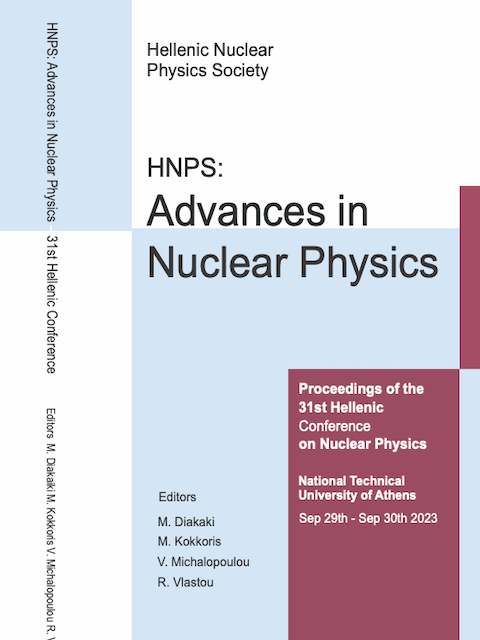CFL quark stars as a candidate for the HESS J1731-347 object with a trace anomaly and GW190814 bound implementation
Περίληψη
A recent analysis on the central compact object within HESS J1731-347 suggested unique mass and radius properties, rendering it a promising candidate for a self-bound star. In this present study, we examine the capability of quark stars composed of color-flavor locked quark matter to explain the latter object by using its marginalized posterior distribution and imposing it as a constraint on the relevant parameter space. The latter space is further confined due to the additional requirement for a high maximum mass (Mtov>=2.6Msolar), accounting for GW190814’s secondary companion. Critical emphasis is placed on the speed of sound and the trace anomaly which was proposed as a measure of conformality [Y. Fujimoto et al., doi: 10.1103/PhysRevLett.129.252702.]. We conclude that color-flavor locked quark stars can reach high masses without violating the conformal or the bound, provided that the quartic coefficient α4 (a crucial parameter accounting for pQCD corrections in the matter's thermodynamic potential) does not exceed an upper limit which depends on the established . For Mtov=2.6Msolar, we find that the limit reads α4<=0.594. Lastly, a final investigation takes place on the agreement of colour-flavour locked quark stars with additional astrophysical objects including the GW170817 and GW190425 events, followed by some concluding remarks.
Λεπτομέρειες άρθρου
- Πώς να δημιουργήσετε Αναφορές
-
Oikonomou, P., & Ch.C. Moustakidis. (2024). CFL quark stars as a candidate for the HESS J1731-347 object with a trace anomaly and GW190814 bound implementation. Annual Symposium of the Hellenic Nuclear Physics Society, 30, 160–167. https://doi.org/10.12681/hnpsanp.6293
- Τεύχος
- Τόμ. 30 (2024): HNPS2023
- Ενότητα
- Oral contributions

Αυτή η εργασία είναι αδειοδοτημένη υπό το CC Αναφορά Δημιουργού – Μη Εμπορική Χρήση – Όχι Παράγωγα Έργα 4.0 4.0.






